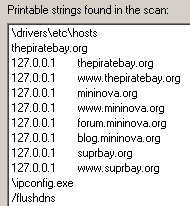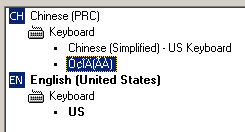 We spotted an interesting behavior from a Trojan dropper that belongs to a family of malware named Ponmocup. The file, update.exe (MD5 89f4ea9f0240239e0d97f202d22af325) leaves behind a payload that, among other things, modifies the Hosts file on infected computers to prevent users from visiting popular Bittorrent sites, including The Pirate Bay.
We spotted an interesting behavior from a Trojan dropper that belongs to a family of malware named Ponmocup. The file, update.exe (MD5 89f4ea9f0240239e0d97f202d22af325) leaves behind a payload that, among other things, modifies the Hosts file on infected computers to prevent users from visiting popular Bittorrent sites, including The Pirate Bay.
It’s an odd behavior for several reasons. We don’t see many Trojans modify the Hosts file anymore because such modifications are so easily reversed. But more to the point: Why would a criminal care whether anyone else be able to browse The Pirate Bay, a Web site known to host torrents of pirated, copyrighted material? And why also block Mininova, which changed its content model more than a year ago and no longer hosts copyrighted files? None of these things make sense.
It seems at first blush like the act of someone who fancies himself a copyright vigilante, sophisticated enough to build a custom tool such as this, but who isn’t smart enough to know which sites to block.













































































